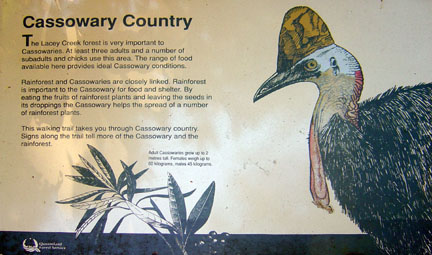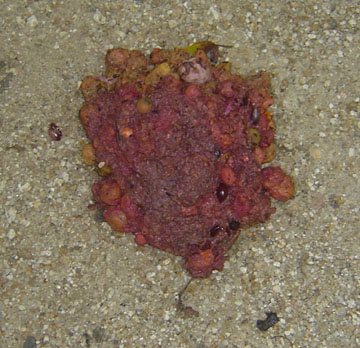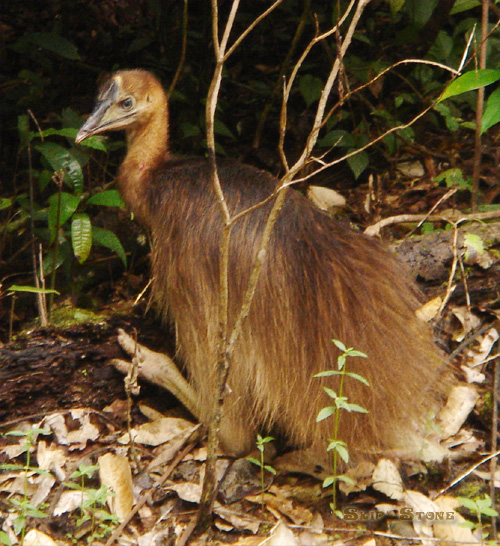According to the Wikipedia, the Southern Cassowary is the second-largest bird in Australia and the third-largest remaining bird in the world. Adult Southern Cassowaries are 1.5 to 1.8 m (5½ feet) tall and weigh about 60 kilograms (130 pounds). A reclusive forest dwelling flightless bird, they have a long sharp claw on each foot that can be used to rip out your guts if you get too close. There are historical references to Cassowaries killing humans, but they are shy creatures, and will seldom reveal themselves to the casual tourist.

Cassowaries are a protected species in Australia.
This beautiful remnant of the dinosaur era has a bony plaque on their head that is used to push through jungle The females are notably larger in this so-called “keystone” species. That is because this bird eats and disperses a variety of seeds from trees and plants, maintaining the diversity of the rainforest.

Cassowaries eat fruits and berries, scattering the seeds far and wide in their shit.
Equipped with razor-sharp claws on each foot, the Cassowary can run up to 52 kmh (32 mph) and jump up to 1.5 m (5 feet). They also swim quite well.
In a reversal of the usual male-female role in nature, the female roams looking for a male to mate with once, lays her eggs, and moves on looking for another male. The female cassowary will lay three to eight large pale green-blue eggs. The male then incubates the eggs for two months until they hatch, and watches over the brown-striped chicks for nine months before he runs them off into the wild to forage for themselves.

Cassowary Chick
Estimates of the current population of Cassowary range from 1500 to 2,500 birds.
According to the Wet Tropics Management Authority, there are two separate populations of Australian cassowary – one in the Wet Tropics area from Mt Halifax/Paluma through to Cooktown, and the other on Cape York Peninsula in the McIlwraith and Iron Ranges, Jardine River area and the Eastern Dunes. The Australian cassowary is called the Southern Cassowary or sometimes the Double-wattled Cassowary.

